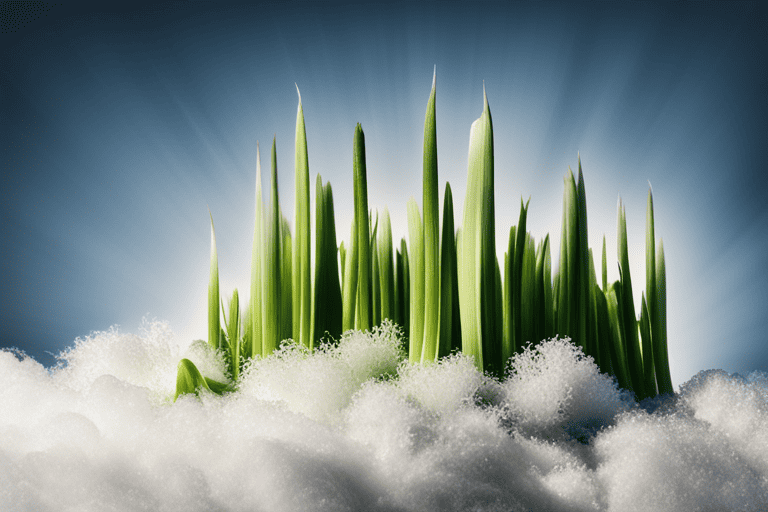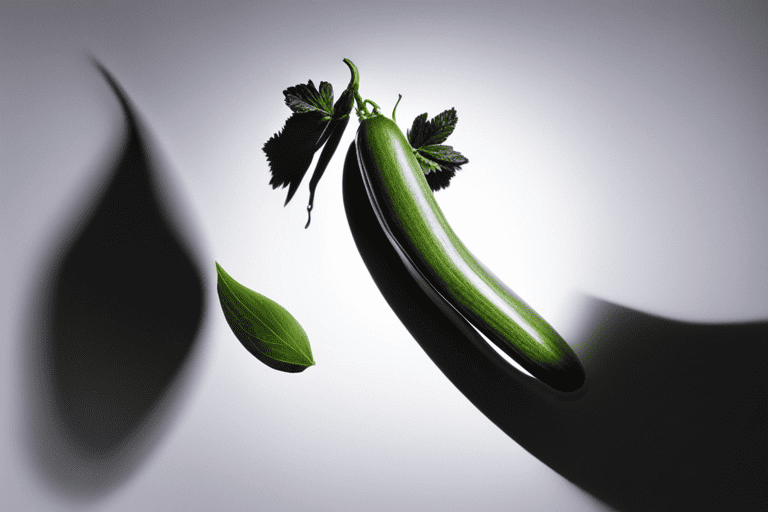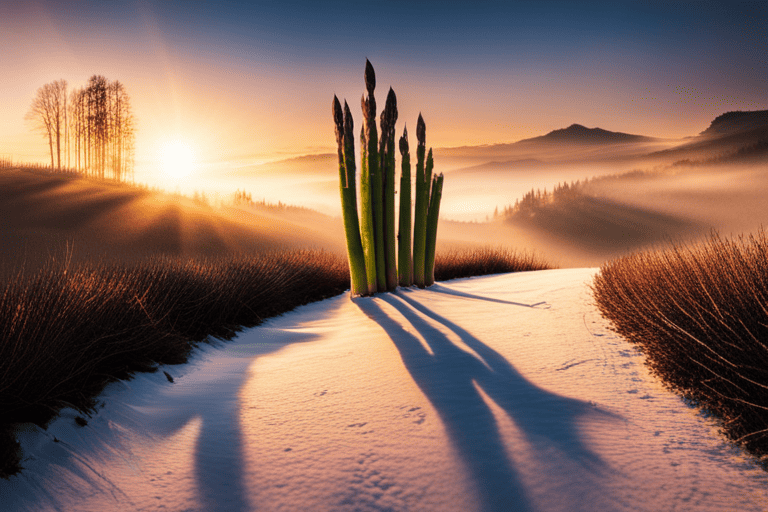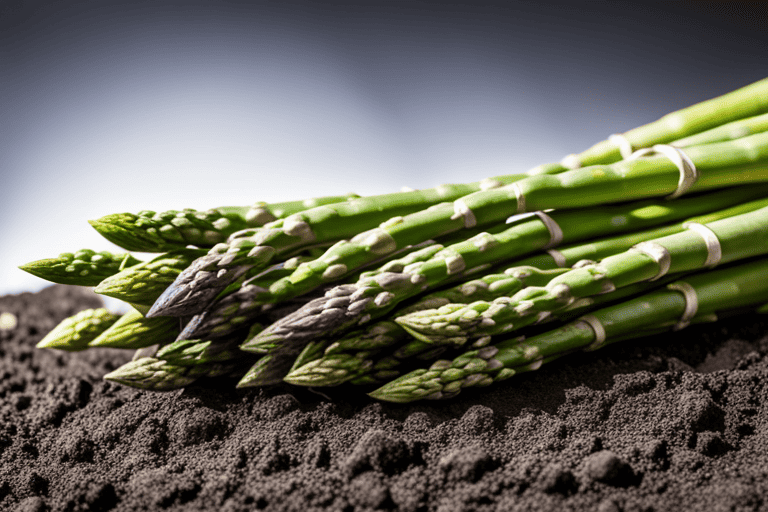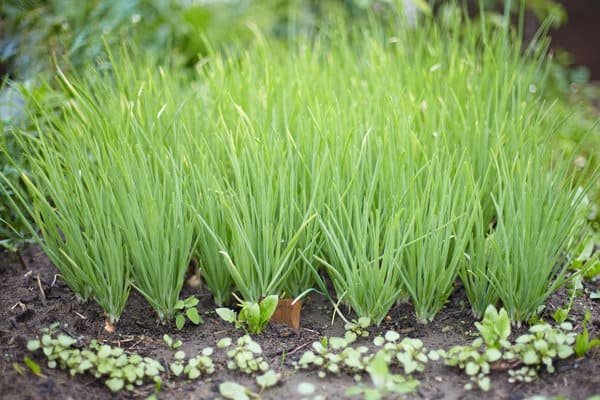Welcome to the ultimate guide on successfully growing green onions from seeds! If you’ve ever struggled with cultivating these versatile and flavorful herbs, fret no more. Our expert tips and tricks are here to enlighten you on every aspect of the process, ensuring that your green onion venture will yield bountiful results.
From seed selection to planting techniques, maintenance practices to harvest methods, this comprehensive article will equip you with the knowledge needed for a flourishing green onion garden. So prepare yourself for an immersive journey into the world of growing green onions as we reveal invaluable insights that will make your gardening endeavors truly remarkable.

The Importance of Seed Selection: Choosing the Right Green Onion Varieties
Choosing the right green onion varieties is crucial for successful cultivation. Each variety has its own unique characteristics, such as taste, size, and growth habits. By carefully selecting the seeds that best suit your needs, you can ensure a bountiful harvest of flavorful and versatile herbs. Different varieties also have varying resistance to diseases and pests, so choosing disease-resistant options can help mitigate potential problems in your garden.
Seed selection is the first step in the journey of growing green onions from seeds. The right choice will not only impact the quality and yield of your crop but also determine how well they adapt to specific growing conditions. Whether you prefer mild or strong-tasting onions or need early-maturing varieties for a quick harvest, selecting suitable seed varieties tailored to your preferences will set you on the path to success.
The importance of seed selection goes beyond just flavor and adaptability; it allows you to experiment with different flavors and textures when cooking. Tending to a diverse range of green onion varieties offers an opportunity for culinary creativity by adding complexity to various dishes and enhancing their overall taste profile. With careful consideration in selecting green onion seeds, you can enjoy a plentiful supply of fresh herbs while exploring new culinary horizons.
Preparing the Soil: Creating the Ideal Growing Environment for Green Onions
When it comes to successfully growing green onions from seeds, preparing the soil is crucial in creating the ideal growing environment. Start by selecting a sunny location for your green onion garden that receives at least six hours of direct sunlight each day. The soil should be well-draining and rich in organic matter, so amend it with compost or aged manure to ensure proper nutrient levels.
Before planting your green onion seeds, break up any large clumps of soil and remove any weeds or debris. Dig down about 6-8 inches and loosen the soil using a garden fork or tiller. This will allow for better root penetration and water drainage. Consider adding some sand or perlite to improve drainage if needed.
Once your soil is ready, sprinkle the green onion seeds evenly across the prepared area. Cover them lightly with a thin layer of soil, about 1/4 inch deep. Gently water the seeds immediately after planting to provide moisture for germination.
Preparing and maintaining optimal conditions in the soil will set you on the path towards successful cultivation of green onions from seed.

Planting Techniques: Step-by-Step Instructions for Sowing Green Onion Seeds
This article provides step-by-step instructions for sowing green onion seeds, ensuring a successful growth of these flavorful herbs. Starting from seed selection, our expert tips and tricks will guide you through the entire process, guaranteeing bountiful results for your green onion venture. Whether it’s choosing high-quality seeds or employing effective planting techniques, this comprehensive guide equips you with the knowledge needed to establish a flourishing green onion garden.
To begin, carefully select your green onion seeds, opting for quality varieties that suit your taste preferences and climate conditions. Once chosen, prepare the soil by loosening it and removing any weeds or debris. Make shallow furrows in the soil using a gardening tool or finger at least ¼ inch deep.
Next, sow the seeds evenly along these furrows while ensuring proper spacing between each seed. Lightly cover them with soil and gently press down to ensure good soil-to-seed contact. Water the newly planted area thoroughly but not excessively to promote germination while preventing waterlogging.
Following these planting techniques will provide optimal conditions for your green onion seeds to sprout and grow into healthy plants ready for future harvests. With our expert guidance throughout every step of the process, growing green onions from seeds has never been easier or more rewarding.
Essential Maintenance Practices: Watering, Fertilizing, and Controlling Pests and Diseases
Watering is an essential maintenance practice when growing green onions from seeds. These herbs thrive in moist soil, so regular watering is crucial to keep the plants healthy and hydrated. However, it’s essential not to overwater as this can lead to rotting roots or fungal diseases. A good rule of thumb is to water deeply but infrequently, allowing the top inch of soil to dry out between waterings. This helps promote strong root growth and prevents waterlogged conditions.
Fertilizing plays a vital role in ensuring the optimal growth of green onions. Consider using a balanced organic fertilizer rich in nitrogen, which promotes leaf development and overall plant vigor. It’s best to apply fertilizers every two weeks during the growing season, following package instructions for application rates. Keep in mind that excessive use of synthetic fertilizers can cause mineral buildup or burn delicate roots, so moderation is key for successfully nourishing your green onion plants.
Controlling pests and diseases is another important aspect of maintaining healthy green onions from seedlings until harvest time. Regularly inspect your plants for common pests like aphids or thrips and take immediate action if detected by handpicking them off or using insecticidal soap if necessary. In terms of disease prevention, practicing crop rotation each season helps minimize soil-borne pathogens that may affect your green onion crops year after year.
Nurturing Your Green Onions: Tips for Optimal Growth and Development
Green onions are a versatile and flavorful herb that can be easily cultivated from seeds. To ensure optimal growth and development, there are several key tips to keep in mind. First and foremost, selecting high-quality seeds is crucial for successful growth. Look for varieties suited to your climate and the specific flavor profiles you desire.
Once you have your green onion seeds, it’s important to prepare the soil properly before planting. Ensure that the soil is well-draining and rich in nutrients by incorporating compost or organic matter before sowing. Planting depth should be shallow, with the tip of each seed barely covered with soil.
Regular watering is essential throughout the growing process, as green onions require consistent moisture without becoming waterlogged. Mulching can help retain moisture and control weed growth around your plants. Additionally, providing sufficient sunlight will aid in their overall development.
To harvest green onions at their peak flavor and texture, wait until they reach about 8-10 inches tall before cutting them just above ground level using sharp shears or scissors – this allows for continual regrowth if desired.
By following these expert tips for nurturing your green onions from selection to harvest methods, you’ll be on track to enjoy a bountiful crop of delicious homegrown herbs.
Harvesting and Storing Green Onions: Ensuring Freshness and Longevity
Harvesting and storing green onions is crucial for ensuring their freshness and longevity. To maintain the best flavor and texture, it is important to harvest green onions at the right time. Generally, they can be harvested when the leaves are about 6-8 inches tall. Gently pull them out of the ground or cut them just above the soil level with a sharp knife.
After harvesting, it is essential to store green onions properly to extend their shelf life. The best method is to wrap them in a damp paper towel and place them in a plastic bag or an airtight container in the refrigerator. This helps retain moisture while preventing wilting and spoilage. It’s important to note that storing green onions with fruits like apples or bananas should be avoided as these release ethylene gas which speeds up spoilage.
Following these practices will help ensure that your freshly harvested green onions stay crisp, flavorful, and ready for use whenever needed.
Troubleshooting Common Issues: Solutions to Overcome Challenges in Green Onion Cultivation
Troubleshooting common issues is essential in green onion cultivation to ensure a successful harvest. One of the most common challenges faced by growers is poor germination. To overcome this, it is crucial to select high-quality seeds and provide optimal growing conditions such as proper moisture levels and adequate sunlight. Additionally, soaking the seeds prior to planting can enhance germination rates.
Another issue that may arise in green onion cultivation is nutrient deficiency or imbalance, leading to stunted growth and yellowing leaves. Regular soil testing can help identify any deficiencies and guide appropriate fertilizer application for optimum plant health. Implementing a balanced fertilizer with nitrogen, phosphorus, and potassium content tailored specifically for onions can help address these issues.
Pests such as aphids or thrips are also known culprits that damage green onions’ foliage and reduce yields. Inspecting plants regularly for signs of infestation like distorted leaves or sticky residue will allow early detection of pests. Applying organic insecticides or introducing beneficial insects like ladybugs can effectively control pest populations without harming the environment.
By troubleshooting common problems using these solutions, cultivators can overcome challenges encountered during green onion cultivation while ensuring healthy plant growth and maximum yield production.

